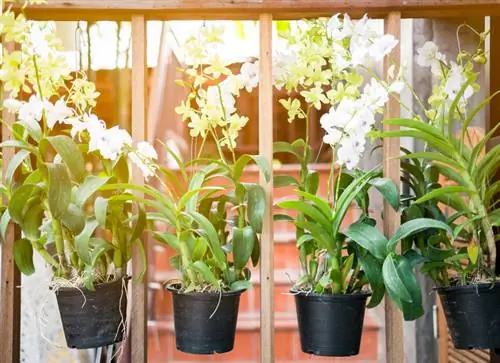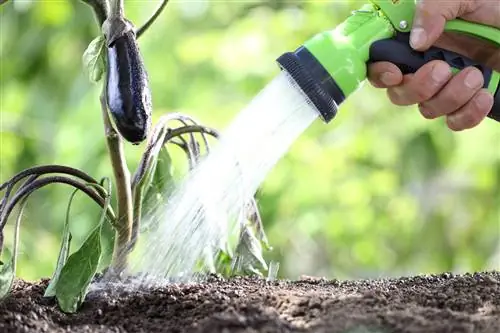- Author admin [email protected].
- Public 2023-12-16 16:46.
- Last modified 2025-01-23 11:20.
Not every rose that looks dead or dying has actually died, because withered or poorly growing specimens can often still be saved. You can easily determine whether such a project can bear fruit with the acid test: lightly scratch different places on several shoots with your fingernail, then you can see whether the shoot underneath is still alive. Many types of roses can be brought back to life by radical pruning.

How to save a withered rose?
To save a withered rose, first check the roots for discoloration or rot. If there is too much water, cut back rotten roots, transplant the rose and improve the soil. In dry conditions, water the plant thoroughly and fertilize regularly. Sick roses should be cut back and treated with natural remedies.
Revive Withered Roses
First of all: Not everything that looks dried up has actually perished due to lack of water. Sometimes it's not too little water, but - on the contrary - too much water that causes withered shoots and yellow leaves. So before you thoroughly water your rose, which is supposedly damaged by a lack of water, and thereby make things worse, you should check the roots of the plant: If the fine hairy roots no longer look white, but have turned brownish and/or appear to be rotten, then they are You have been too wasteful with the irrigation water or the soil is not permeable and loose enough. Save these roses by
- Dig up the rose or take it out of the pot.
- Remove any soil clinging to the roots.
- Cut back the rotten and damaged roots.
- Prune the rose back above ground too.
- Either transplant the plant to a new location,
- replace the substrate in the pot and possibly use a new pot
- or improve the soil in the garden.
If, on the other hand, excessive dryness is the cause, then water the roses thoroughly and don't forget to fertilize them regularly. For this purpose, it is best to place potted roses together with the root ball in a bucket of water - as soon as the plant has had its fill, water bubbles will appear.
Be sure to cut back sick roses
Roses are quite susceptible to fungal diseases or pest infestation. You can prevent these diseases in some ways by only planting robust varieties, ensuring an optimal location and good care. With many fungal diseases, the only solution is to immediately cut away the affected parts of the plant and then dispose of them with household waste. Spraying the roses (e.g. with horsetail broth or nettle manure) can also help, as these natural products disinfect and strengthen the plant.
Tip
Wild roses can often be saved by strong and targeted pruning, although you must be aware of the following: After such pruning, it may take years until the rose has recovered and blooms again.






